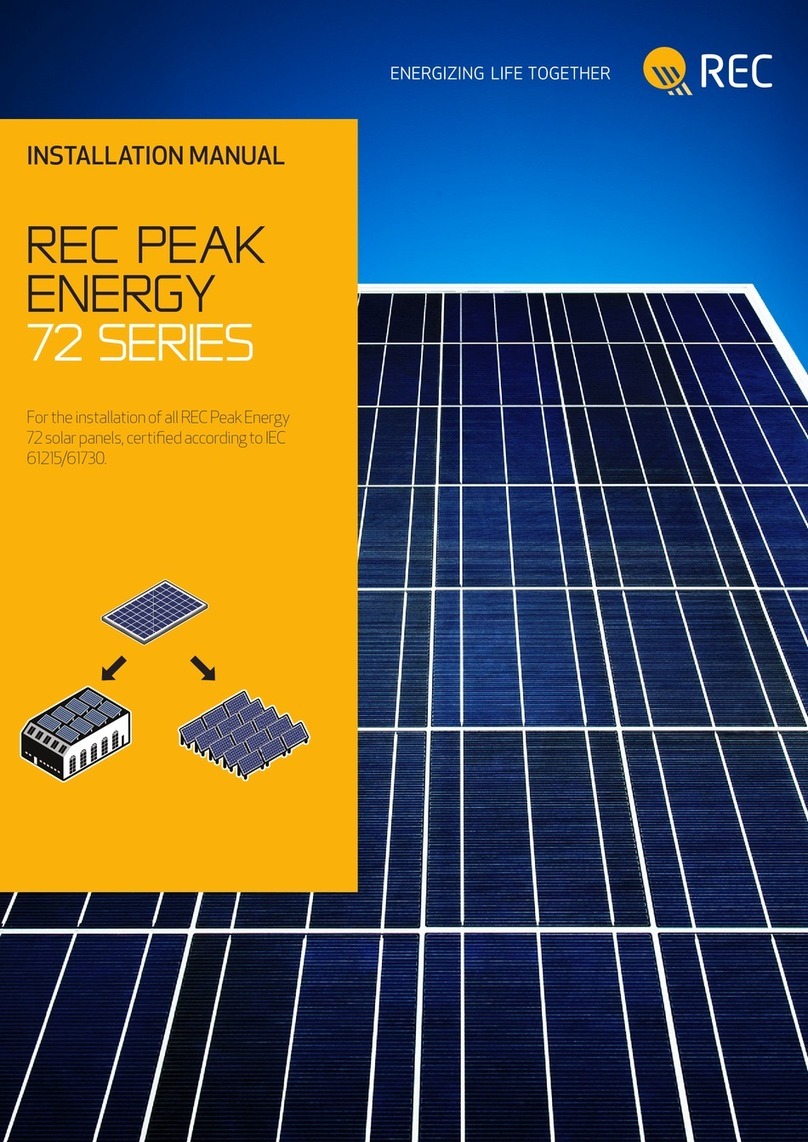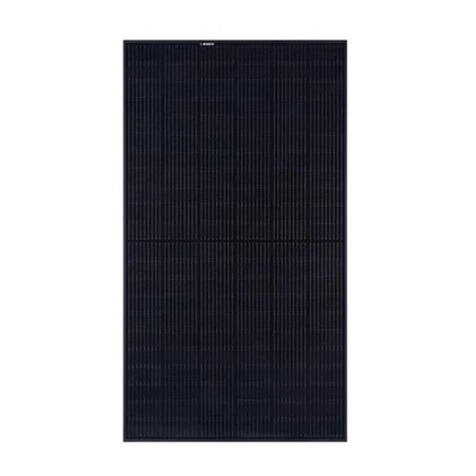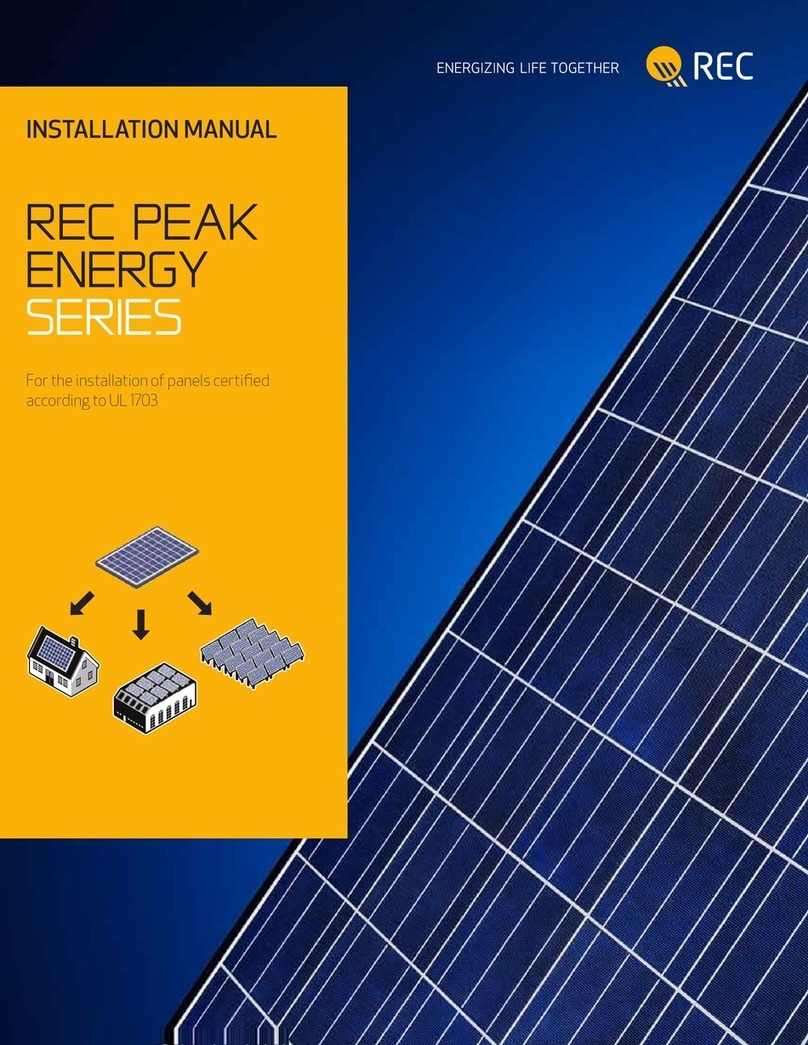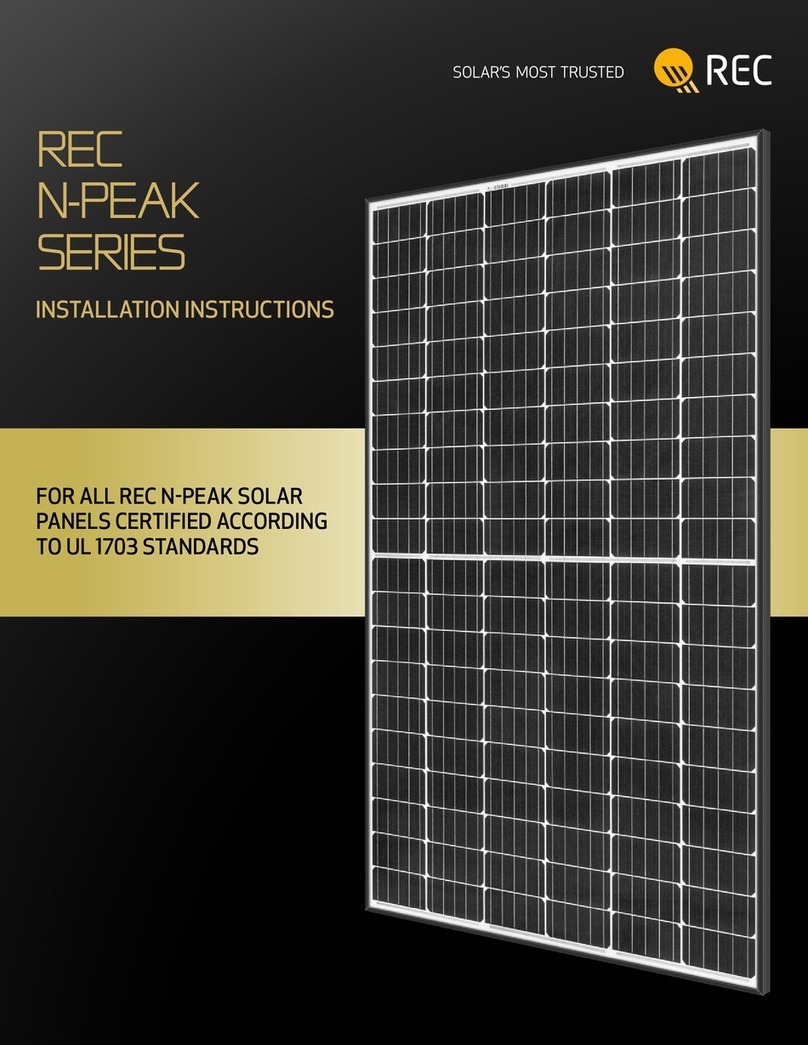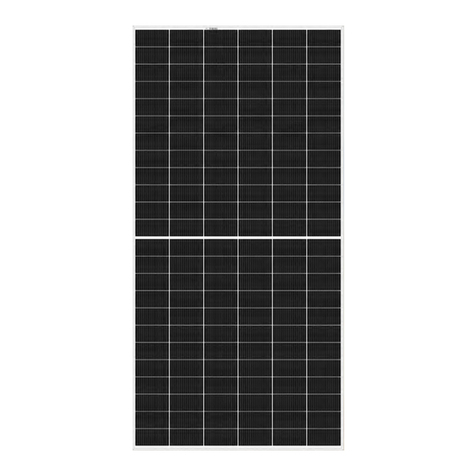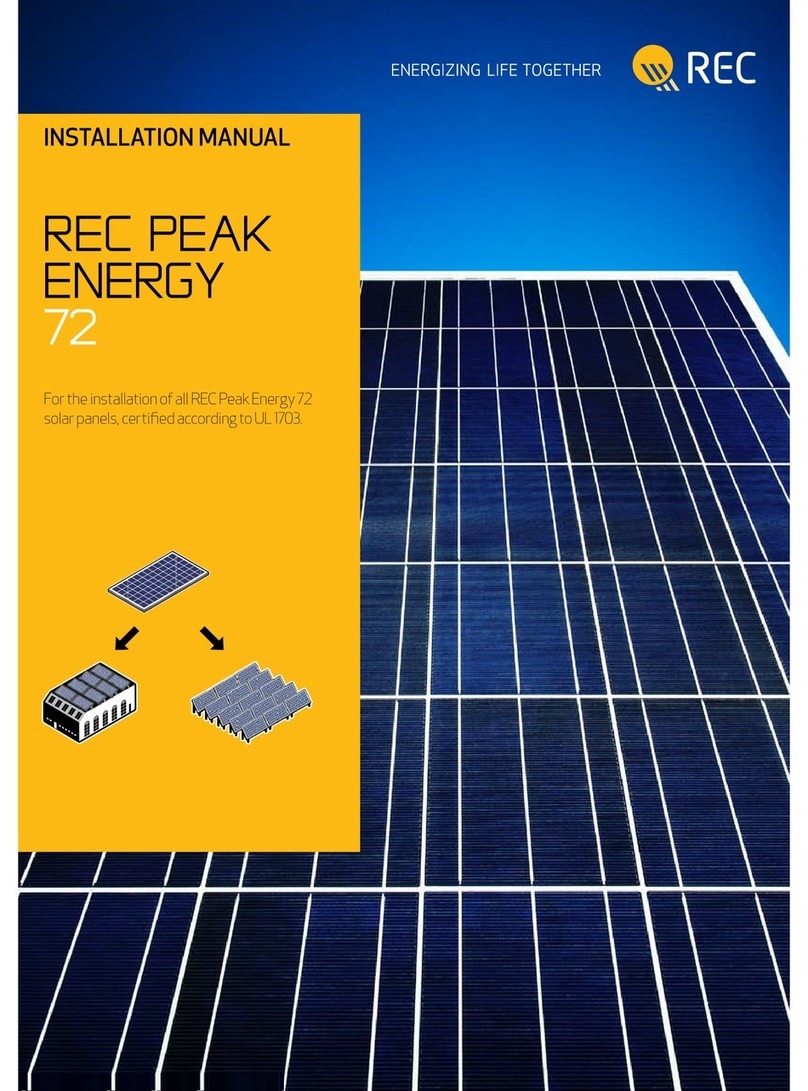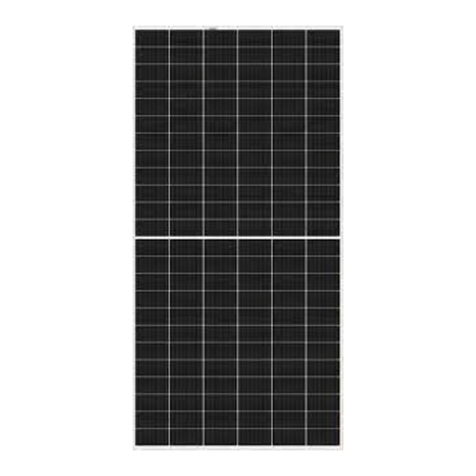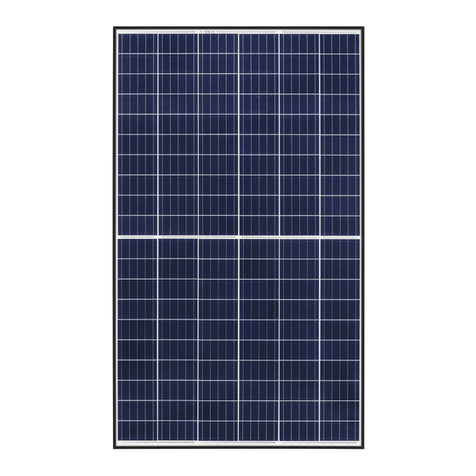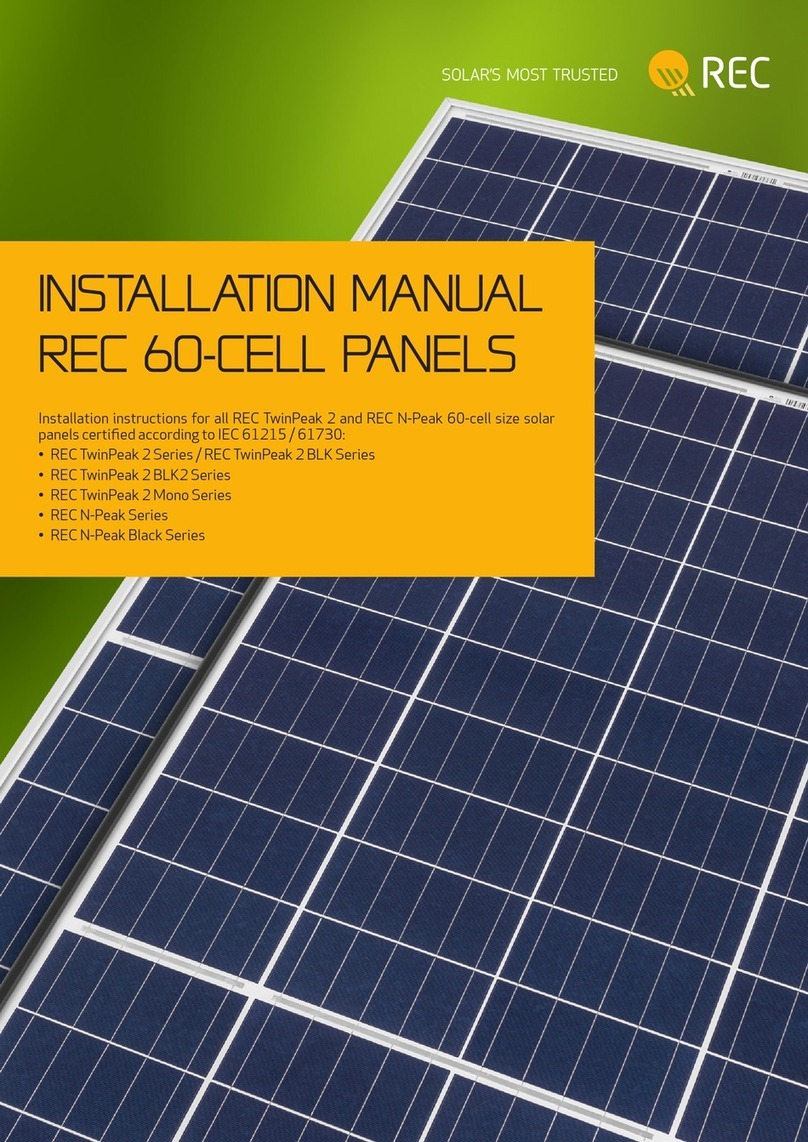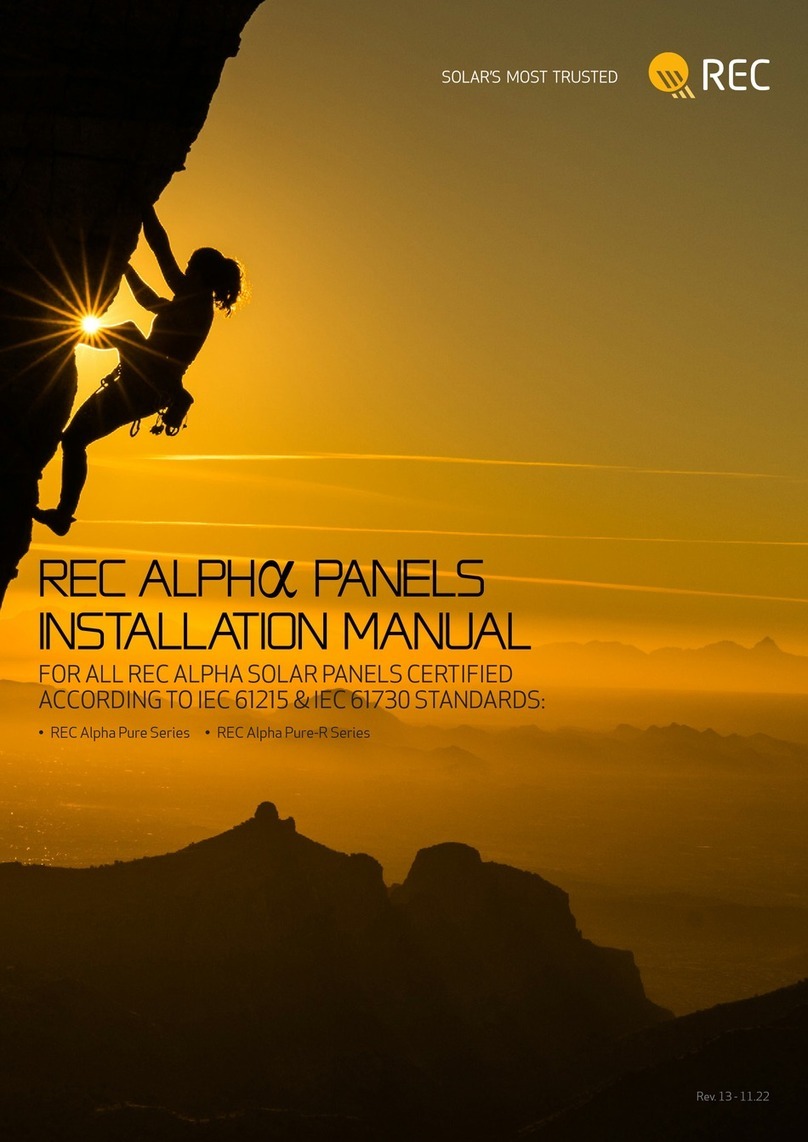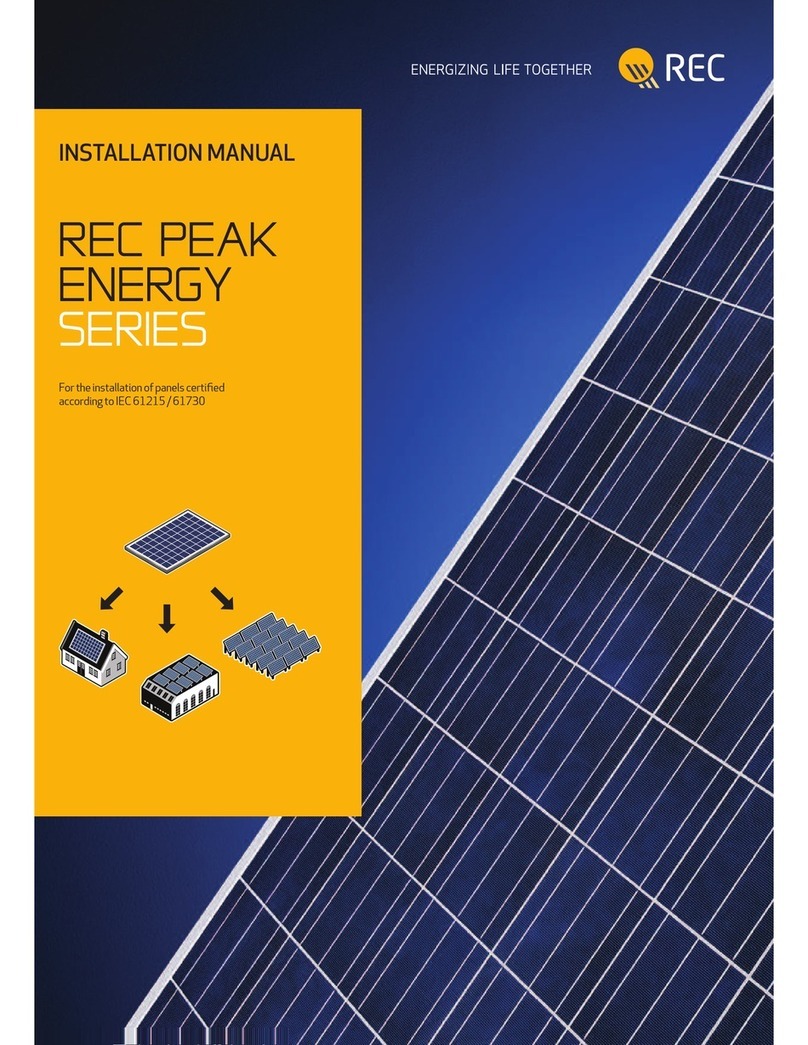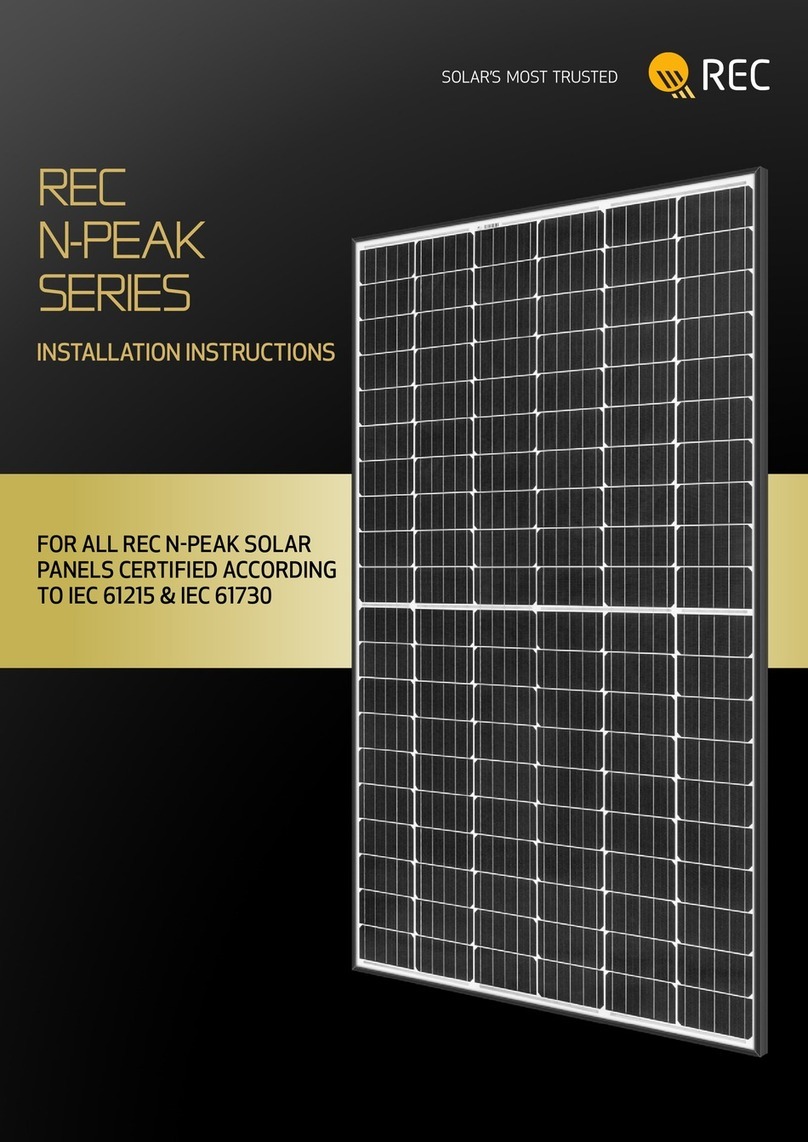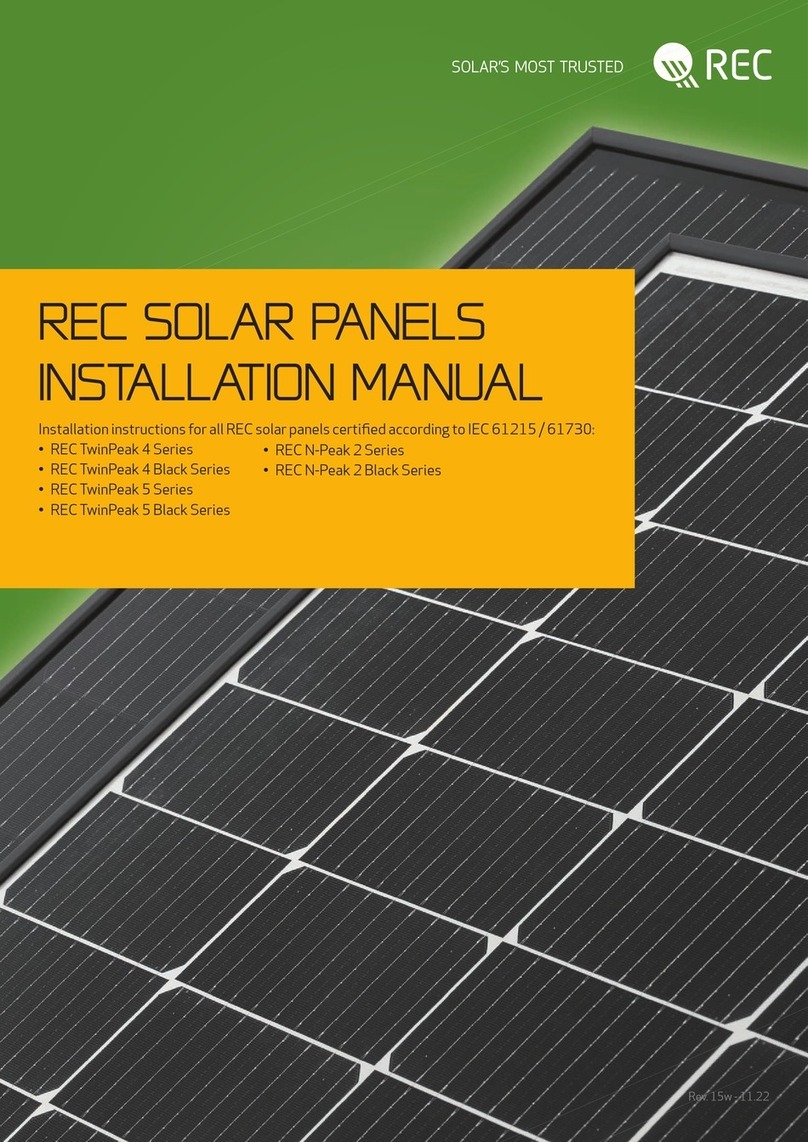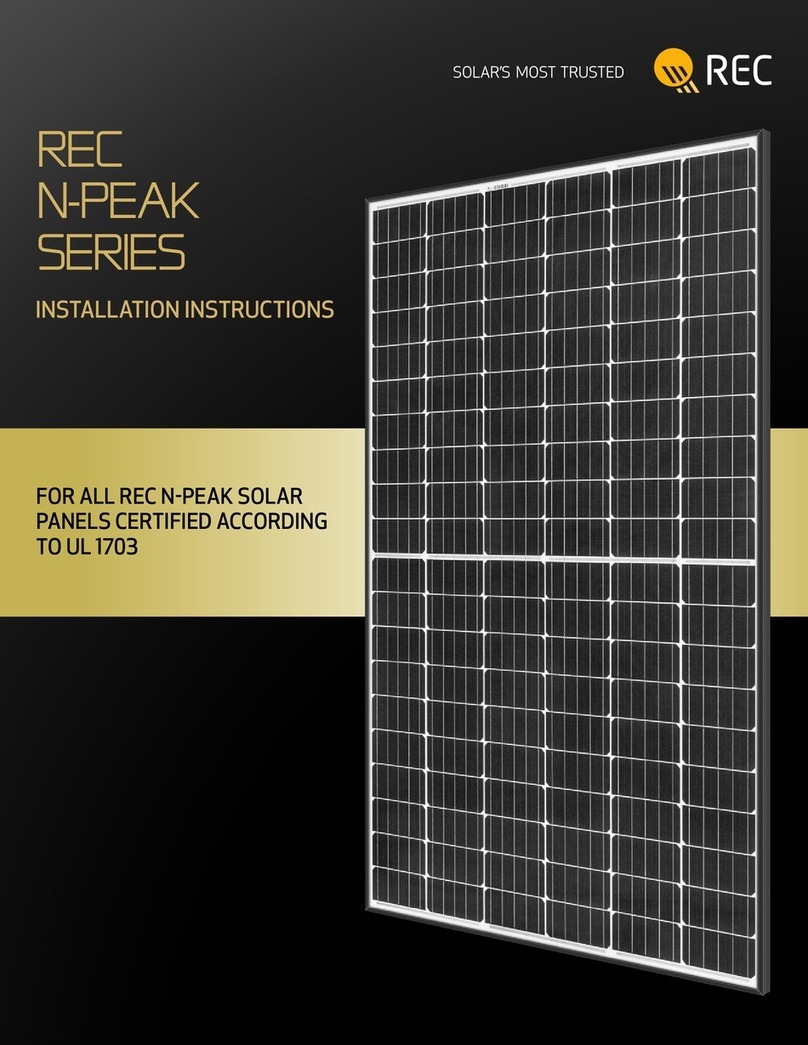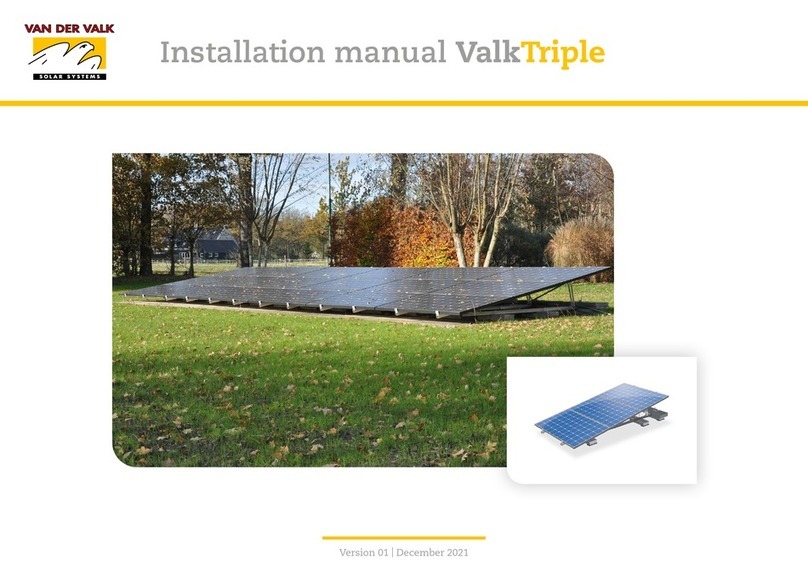
REC Installation Manual - REC Panels - UL 6
Rev . Ref: PMIM
ELECTRICAL INSTALLATION
ELECTRICAL REQUIREMENTS
Application Class
REC solar panels are rated for use in Electrical Application Class A, Protection Safety Class II; at hazardous levels of voltage (>V), current(>A) and
power (>W) where general contact access is anticipated (panels qualified for safety through UL - and -).
System Requirements
REC solar panels are only for use where they meet the specific technical requirements of the complete system. Ensure other components will not cause
mechanical or electrical damage to the panels. Only panels of the same type and power class should be connected.
String configuration
When connecting panels in a string, plan and execute according to the inverter manufacturer’s instructions. The number of panels connected to an inverter
must not exceed the voltage limits and operating range permied by the manufacturer, nor under any circumstance exceed the maximum system voltage
as stated in the technical specifications for the product at the rear of this manual.The maximum system fuse rating (overcurrent protection rating) and the
maximum reverse current for each panel can be found in the technical specifications for the product at the rear of this manual.
The maximum number of panels in a string can be calculated by dividing the maximum system voltage of the panel by its VOC accounting for the lowest ambient
temperatureatsite,e.g.:foraVsystem,ifthelowestambienttemperatureis°C[ °F],thepanelhasaVOC of.VandatemperaturecoefficientofVOC
of -./°C, the maximum panels per string is (∆T°C = ° - ° = °; ° x . = .; . + . = .; V/ . = ., so a total of panels
or V). Qualified system designers can make exact calculations that account for specific project requirements and site conditions.
String connection
If panels are connected in series, they must have the same ampere rating. If panels are connected in parallel, they must have the same voltage rating.
The maximum number of panels that can be connected in series or parallel depends upon system design, type of inverter and environmental conditions.
Panel and string configuration must correspond to the specifications of other system components e.g., inverter. Refer to the reverse current rating of
the panel as indicated in the technical characteristics section to the rear of this manual or on the panel datasheet.
Wiring
Wiring installation shall be in accordance with the National Electric Code (NEC) (or CSA C., Safety Standard for Electrical Installations, Canadian
ElectricalCode,Part where applicable).To minimizevoltagesurges (e.g., indirect lightning strikes),cables of the same string must be bundled together
so loops are as small as possible. String configurations must be checked before commissioning. If open circuit voltage (Voc) and short circuit current (Isc)
deviate from specification, this may indicate a configuration fault. Correct DC polarity must be observed at all times.
Electrical Ratings
Electrical ratings are within a specific tolerance of measured values at Standard Test Conditions (STC) as given in the technical characteristics for each
panel at the rear of this manual. Under normal conditions, a photovoltaic panel is likely to experience conditions that produce more current and/or voltage
than reported at STC. The requirements of the NEC in Article must be followed to address these increased outputs. In installations not under the
requirements of the NEC, the values of ISC and VOC marked on the panels must be multiplied by a factor of . (or according to local regulations) when
determining component voltage ratings, conductor ampacities, overcurrent device ratings and size of controls connected to the PV output.
MECHANICAL INSTALLATION
FIRE GUIDELINES
TheRECsolarpanelscoveredbythismanualhaveaClass C(referencingUL )fire classification.TheRECsolarpanelsin-cellformatareratedType
fire classification according to IEC -: (ref. ANSI/UL ); The REC solar panels in -cell format are rated Type fire classification
according to IEC -: (ref. ANSI/UL ). The fire performance rating of the panels is only valid when mounted in the manner specified in
thisinstallation manual.Thecomplete system fireclass ratingis tobeachievedbythecombinationof panel fireperformancetype and ULcertified
mounting structure for a non-BIPV panel. Please refer to mounting structure UL listing for System Fire Classification. Any specific limitations on
the inclination or accessories required to maintain a specific System Fire Class Rating must be clearly specified in the mounting system manufacturer’s
installation instructions and UL certification. Utilize the following fire safety guidelines when installing REC panels:
• Check with all relevant local authorities for fire safety requirements for any building or structure on to which the panels will be installed,
• The system design must ensure that it can be easily accessed in the event of a building fire,
• Check with relevant authorities for applicable regulations concerning setbacks or other placement restrictions that may apply for roof-mounted arrays,
• The use of DC ground fault interrupters is recommended.This may also be required by local and national codes,
• All electrical appliances are a fire risk. The panel must be mounted over a fire retardant roof covering rated for the application and a distance
of at least . in mm(. in / mm for REC solar panels in -cell format) between the panel and the mounting surface, to allow the free
circulation of air beneath the panels at all times.
ORIENTATION
The optimal mounting position of a panel results in the sun’s rays falling perpendicular (i.e., at °) to the surface. To maximize system output, panels
shouldbeinstalledattheoptimumorientationandtiltangle.Thespecificsofthisdependonlocationandcanbecalculatedbyaqualifiedsystemdesigner.
All panels in a string should, wherever possible, have the same orientation and tilt to ensure the system does not underperform due to mismatched
outputs. Dependent on local conditions, a lower angle of installation will potentially increase the requirement for regular cleaning.
DANGER Electrical shock
Safety is paramount when working on the electrical installation. Always follow the electrical requirements to avoid the risk of sparking, fire hazards,
burns and lethal electric shocks.
NOTE
The IP rating of the junction box provides a level of protection that allows panels to be mounted in any orientation.
i
